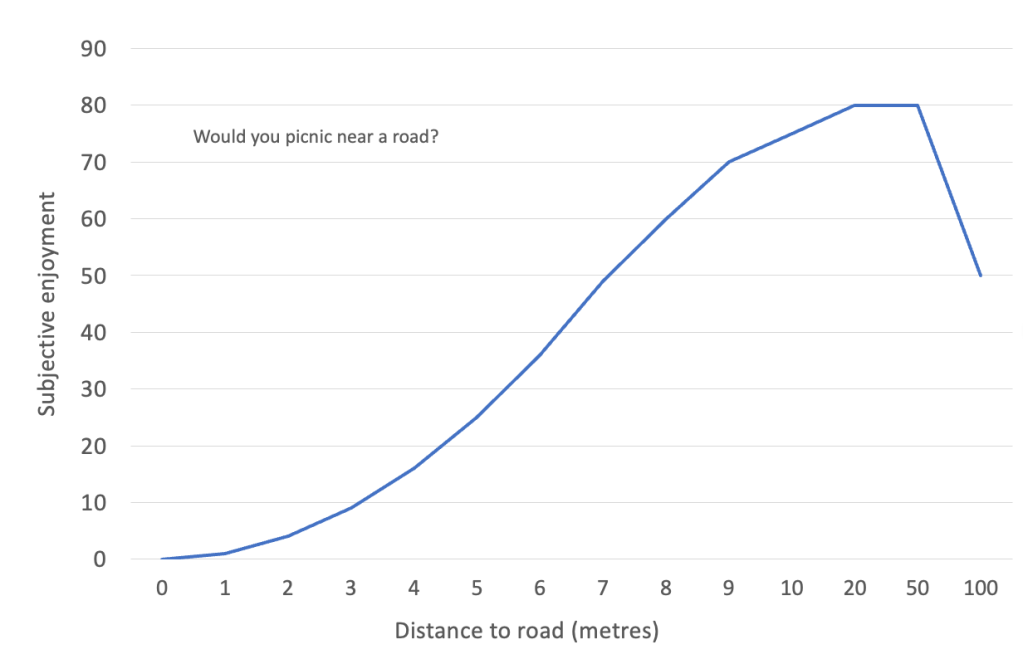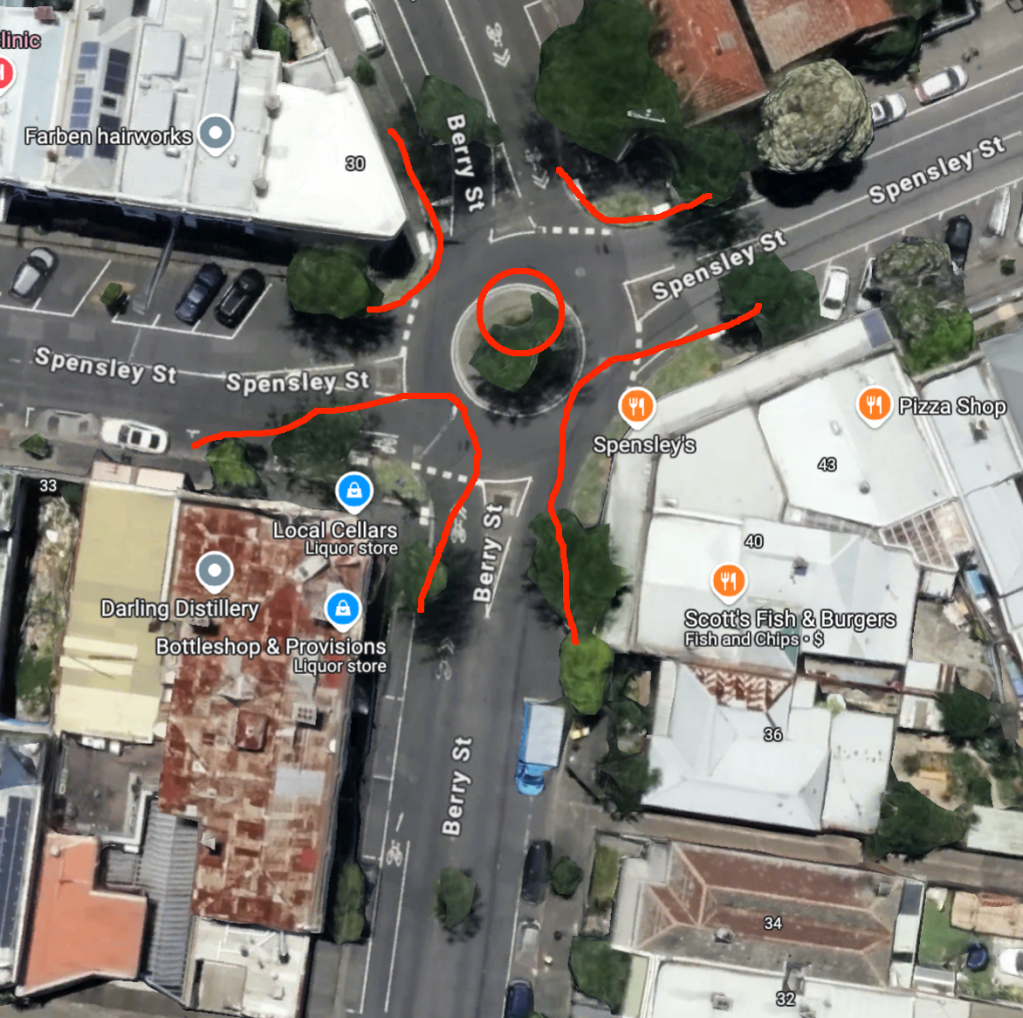Roundabouts are good way to control traffic. But they are land-hungry. In certain places getting that land back should be a priority.
Land use is a topic that excites a lot of economists. We are obsessed with efficient use of inputs, and land is one of the trickiest ones to manage. Once some land is used in a certain way it can be used like that for years, or even centuries. This is path dependency in its original form – street patterns in some big cities were laid down thousands of years ago. Land use is growing even more important because we’re not making any more of it and density is growing
I believe I’ve got an idea for winning back some vital bits of land. To introduce the idea I want to show you a particular roundabout not so far from my house. It’s on a lightly trafficked road, it is very big and it’s on very desirable land.

What they need to do is join the land that is inside that roundabout to the waterfront. As it is, that land is cut off. It’s nice for birds maybe. But people can’t easily use it.
The view from there is amazing. it’d be a perfect picnic spot. There’s yachts in the foreground and the city skyline in the background. Highly Instagrammable!

Seems crazy to pave this spot
This idea flows from the principle that public space needs to be a certain size to be valuable to people. Little strips of grass or footpath next to a road are fine as buffers but not no good to sit in. a park or plaza needs to be a certain size to be nice to use. Pocket parks are nice ideas but they are often too pokey to be genuinely useful.
Here’s a graph showing what I mean. It has distance from the road on the x-axis and pleasantness on the y-axis. Note the horizontal axis is non-linear and I argue that a park can be too big in an urban setting – once you’re too far from a road the amount of passing pedestrians falls and a park can become empty and eerie.

This is just a model of how people enjoy public space. For different people and different types of road, the shape of the curve is different Still, if the idea embodied here is true it implies that by joining together bits of public space we can make them more valuable.
Here’s how I imagine the solution looking in Willliamstown. The new roads are outlined in red. The land in the roundabout is connected to the park. You could put in a micro roundabout at the new intersection or a stop sign. The road to the south side is just a driveway into the yacht club so it won’t be too busy (the busier the road the further you’d need to be from it to enjoy your surroundings)

To get value out of this idea it makes sense to move that carpark too, turn it into parkland
People would picnic at the feet of the cenotaph and it wold be beautiful.
Creating one big chunk of park out of two little bits of park could let us wring more value from the precious limited amount of land around. Back in the day such an idea may not have been valuable because the city was less crowded and land was less precious. You could seal off a big chunk of land inside a roundabout and it didn’t matter. Now that’s no longer true. We need to treat land like we treat water and stop letting it go to waste.
There’s another roundabout I would like to point out as well where this principle could help inspire better land use. It’s much smaller and in a less idyllic setting, but it is a crowded pedestrian area with very small footpaths. There’s a cafe there with outside tables that would benefit from much more footpath space. The site on the other side was a pub and could become an even more succesful one if there was space for a few outside tables.

Clifton Hill, about 50 metres east of the train station.
This is an extremely low traffic area and it wouldn’t risk creating a traffic jam if this roundabout became a narrow tricky thing drivers had to slow dramatically for. They could close off one of the exits or entries or perhaps create a hybrid roundabout / one-way slow point.
These are just two sites where land is at a premium and a legacy roundabout is gobbling up land that could be better used. I bet there are hundreds more like it across Melbourne and many thousands worldwide. And it’s part of the larger principle that we allocate a lot of land to roads that, in some areas, could be available for pedestrians and public use, and we should be fighting to win that back.